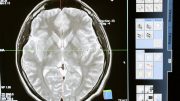The journey towards maintaining a healthy lifestyle can often be complicated, particularly for persons with disabilities. Many unique challenges can present themselves, requiring specific strategies to overcome them effectively. However, regardless of these obstacles, a holistic approach to wellness incorporating proper nutrition and regular exercise remains crucial. Here are six nutrition and exercise tips tailored specifically for those navigating the complexities of living with disabilities.
“Incorporating these tips can significantly improve an individual’s quality of life. Often, disability support services play an integral role in this improvement. These services provide the necessary guidance and resources to individuals, helping them follow the right path on their wellness journey. However, it’s essential to note that individual circumstances may vary, and it’s always recommended to consult with a healthcare professional for personalized advice.
Read on to learn more.
-
Maintain A Balanced Diet
The importance of a balanced diet can’t be overemphasized. An appropriate diet packed with various nutrients such as proteins, vitamins, minerals, and fiber is necessary for individuals with disabilities. For instance, consuming nutrient-rich food is vital in maintaining overall health by boosting immunity and ensuring the body functions optimally.
Moreover, an adequate intake of water promotes good hydration, assisting in digestion and maintaining healthy skin. Hence, disabled individuals should aim to drink at least 8 cups of water per day, increasing their intake if they’re engaged in physical activities. Lastly, practice mindful eating by paying attention to hunger cues and enjoying meals without distractions. This can help prevent overeating and foster a healthier relationship with food.
-
Observe Proper Meal Planning
For persons with disabilities, planning meals can make the difference between consuming nutrient-dense meals or settling for less healthy options. Meal planning can involve the assistance of caregivers or family members to create a weekly menu that incorporates a variety of foods. For instance, individuals can strive for a balance of lean proteins, whole grains, fruits, and vegetables in their diet. Also, nutrient-rich foods can help maintain energy levels and promote general wellness.
Hence, having a good meal plan can help to monitor caloric intake and keep it within healthy ranges, thereby promoting a healthy weight.
-
Understand The Influence Of Medications On Diet
Certain medications that individuals with disabilities may be taking could interact with foods, affecting their nutrition value or absorption. It’s critical to understand these potential interactions to adjust the diet accordingly. Therefore, it’s best to consult a professional nutritionist or dietitian to help develop personalized dietary plans that meet the disabled person’s dietary requirements.
-
Incorporate Regular Physical Activity
Just like proper nutrition, physical activity is paramount for health. For individuals with disabilities, this might require finding creative and adaptive exercises that fit their specific needs. This could range from chair aerobics for those with mobility issues, to water therapy for persons with joint problems.
While regular physical activity can work wonders for both physical and mental health, it’s essential to consider individual abilities and restrictions when devising exercise regimens. Here are key components to consider:
- Personalized Workouts: Work with a qualified physical therapist or trainer to create an exercise program tailored to personal abilities. This can help enhance mobility, strength, and flexibility without undue risk of injury.
- Low-Impact Activities: Engaging in low-impact exercises like swimming, cycling, or yoga can be less stressful on the body while still providing a healthy dose of physical activity.
- Strength Training: Strength training, tailored to individual capabilities, can improve muscular endurance and stability. Adaptive equipment or assisted movements may be utilized where necessary.
- Therapeutic Recreation: Therapeutic recreation refers to activities designed for persons with disabilities to enhance their physical, social, and emotional well-being. These could be activities like adapted sports, yoga, or dance classes, offering a fun and interactive way to stay active.
- Consistency: This is more important than intensity. A moderate, consistent exercise routine can be more beneficial in the long run than occasional high-intensity workouts.
By considering these things, individuals with disabilities can get the most out of physical activities to ensure their overall health.
-
Explore Adaptive Equipment
Today, there’s a wide range of adaptive equipment available that can make both physical activity and healthy eating more accessible. From wheelchair-friendly gym equipment to adaptive kitchen tools, there are options that can assist individuals in maintaining their independence and leading a healthy lifestyle despite their disabilities.
-
Regular Health Check-ups
Along with using adaptive equipment, it is also crucial to undergo regular health check-ups. They are essential to monitor an individual’s overall health, nutritional status, and fitness level. For individuals with disabilities, these check-ups can provide valuable feedback and adjustments to their diet, nutrition and exercise routines, if necessary. Hence, caregivers or family members must make the necessary appointments to ensure their loved ones with disabilities will be checked regularly.
Final Thoughts
Despite the unique challenges that individuals with disabilities may face, it’s important to underscore that maintaining a balanced diet, nutrition and incorporating regular physical activity is pivotal for overall health and wellness. They’re crucial in promoting long-term physical well-being and improving quality of life.
Therefore, incorporate these nutrition and exercise tips to maintain a healthy lifestyle. It’s a journey marked with challenges, but with the right approach and resources, individuals with disabilities can overcome these and lead fulfilling, healthy lives in the long run.





